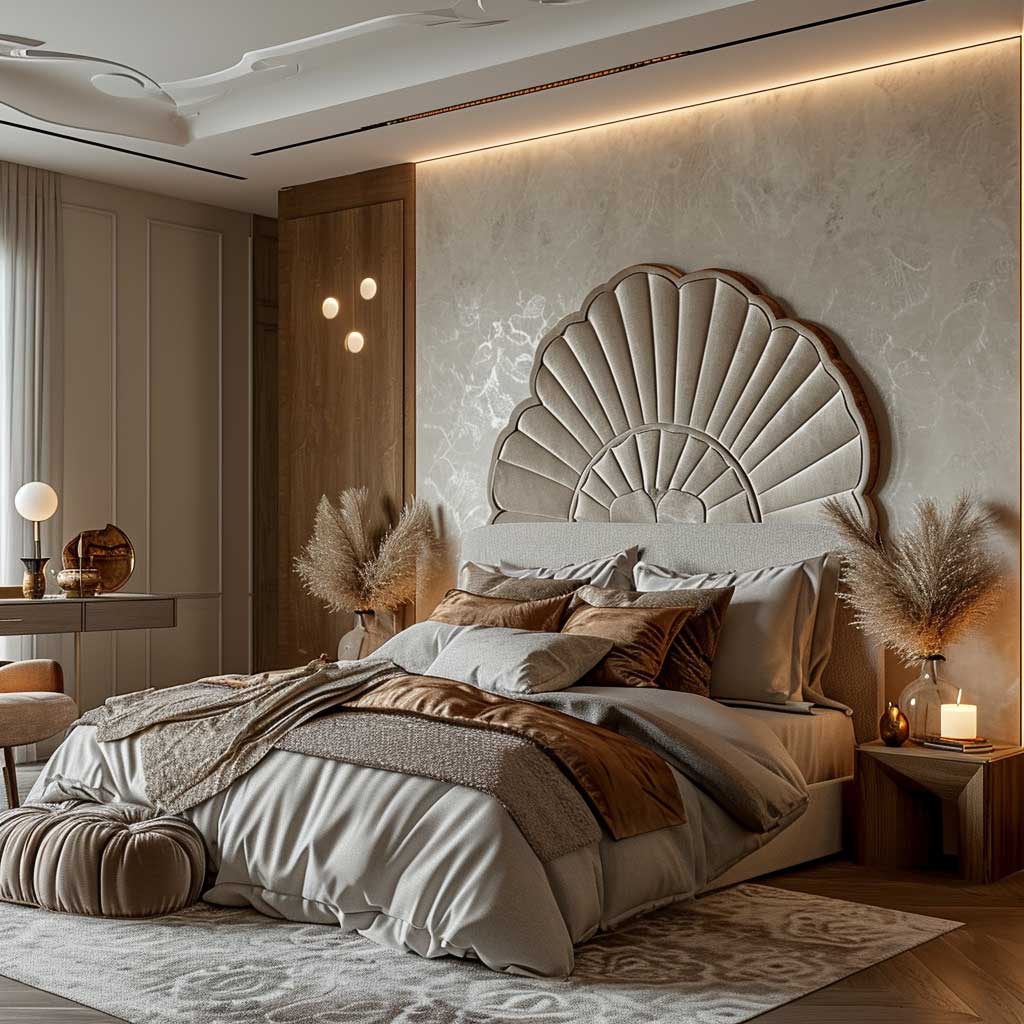In the realm of interior design, biophilic design stands out as a profound approach that not only transforms spaces aesthetically but also enhances the overall wellness of the inhabitants. Biophilic interior design is about bringing the essence of nature into our homes, creating environments that promote health, well-being, and a deep connection with the natural world. This design philosophy taps into our innate affinity for nature, harnessing its restorative properties to craft living spaces that soothe, inspire, and invigorate.
Nature’s Embrace in Biophilic Living Room Designs

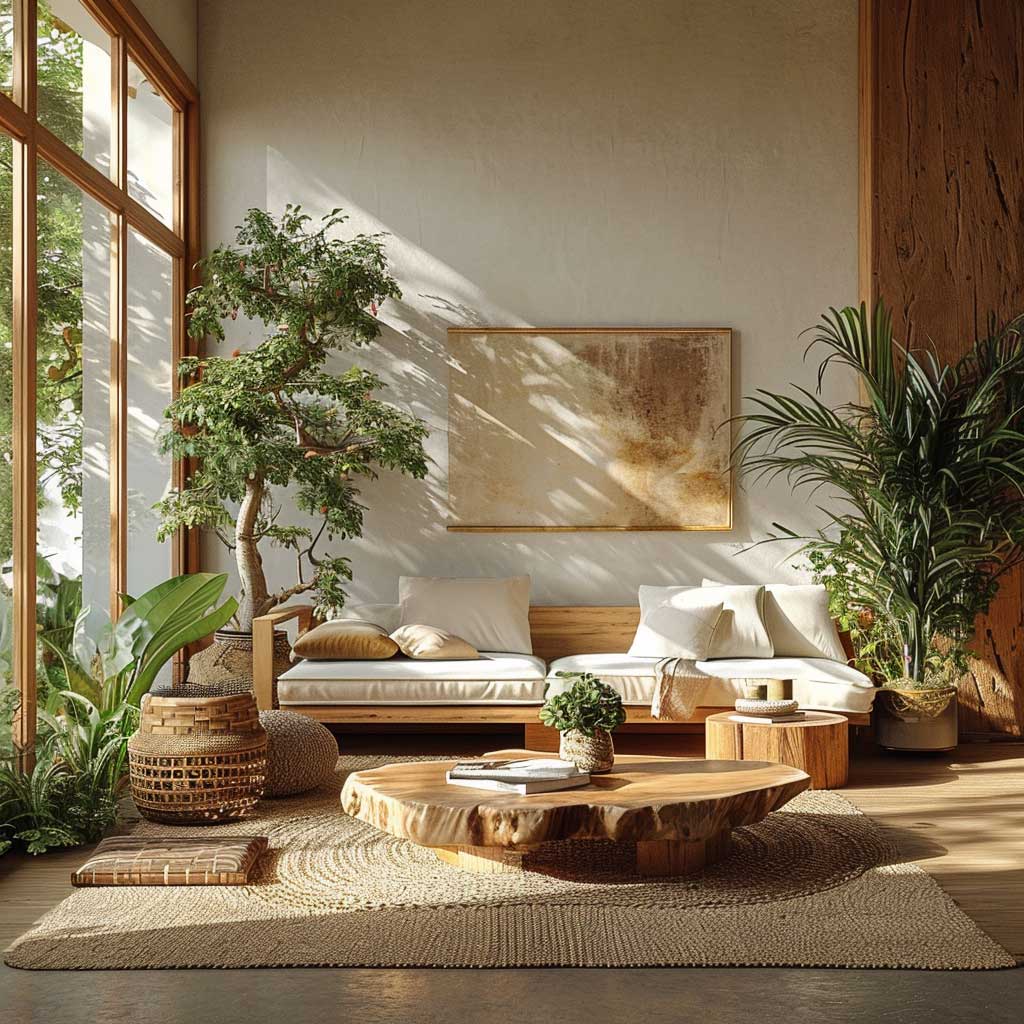

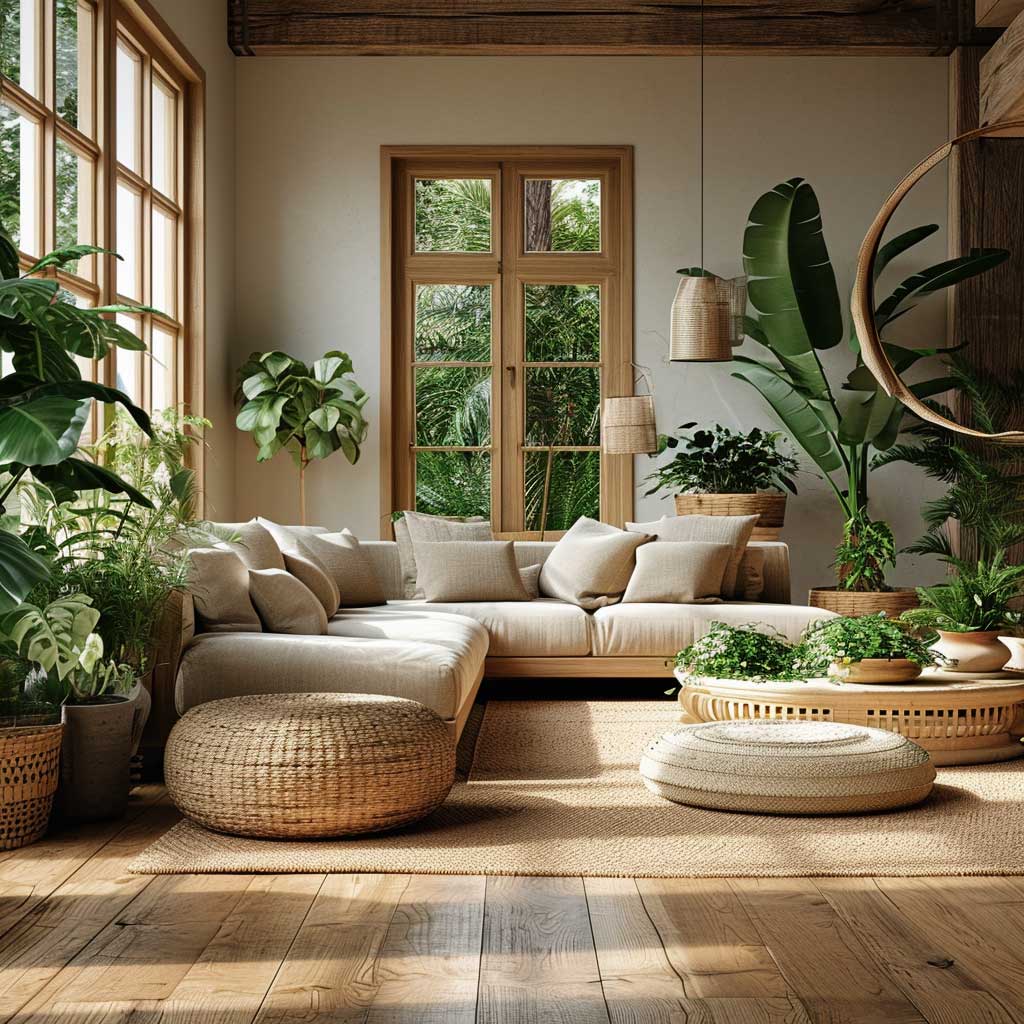
Biophilic interior design, an approach that integrates natural elements into living spaces, is transforming how we perceive and interact with our indoor environments. In living rooms, where families gather and memories are made, biophilic design can create an atmosphere that is both invigorating and restful. It’s about more than just aesthetics; it’s about fostering a deeper connection with nature and enhancing the well-being of the occupants.
In a living room designed with biophilic principles, the presence of indoor plants is often the most noticeable feature. From potted trees that touch the ceiling to cascading hanging plants, these living elements are more than decorative. They play a crucial role in purifying the air, reducing stress, and improving mood. The greenery creates a visual connection to the outside world, blurring the boundaries between indoors and outdoors.
Natural light is another key aspect of biophilic living room design. Large windows or skylights that allow sunlight to flood the space not only reduce the need for artificial lighting but also provide a psychological boost. Exposure to natural light has been shown to improve sleep patterns, mood, and overall health. In the evening, lighting that mimics the warmth and softness of natural light helps maintain this connection with the natural world.
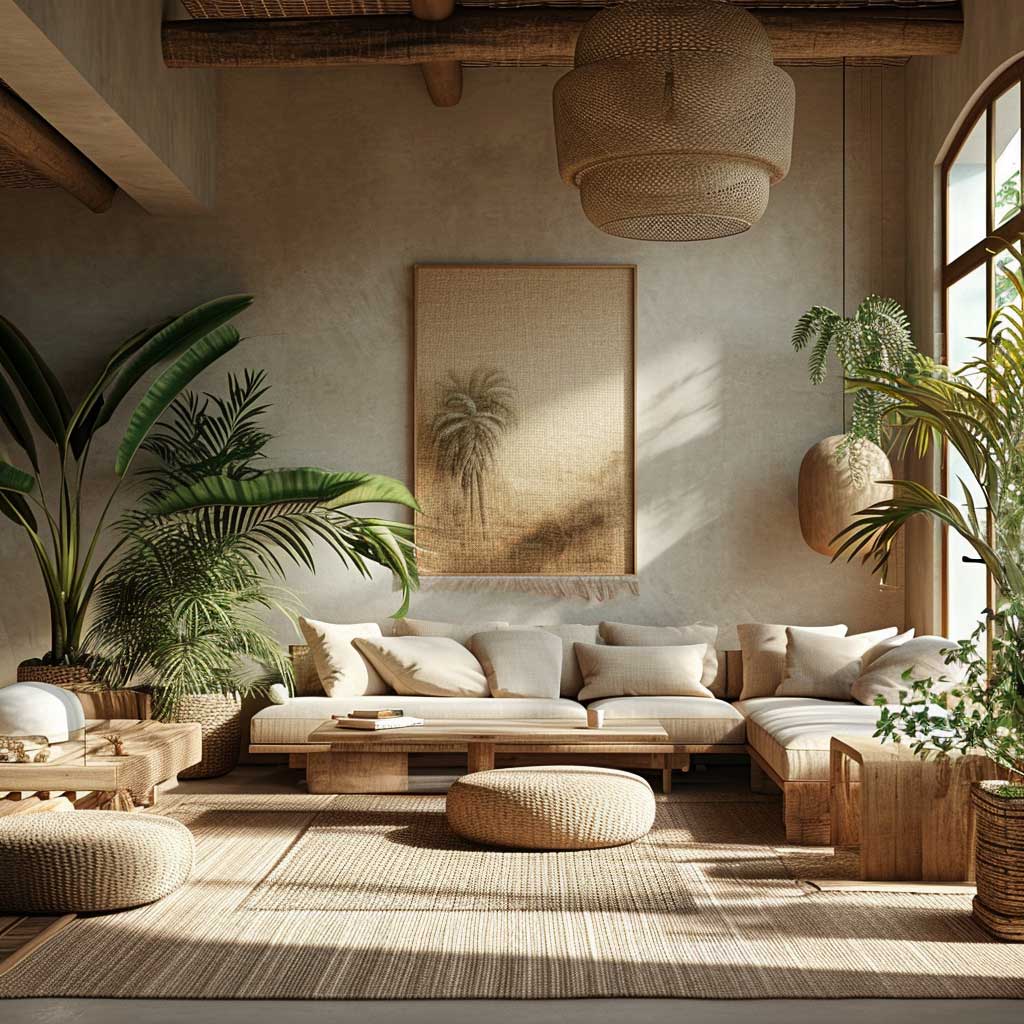
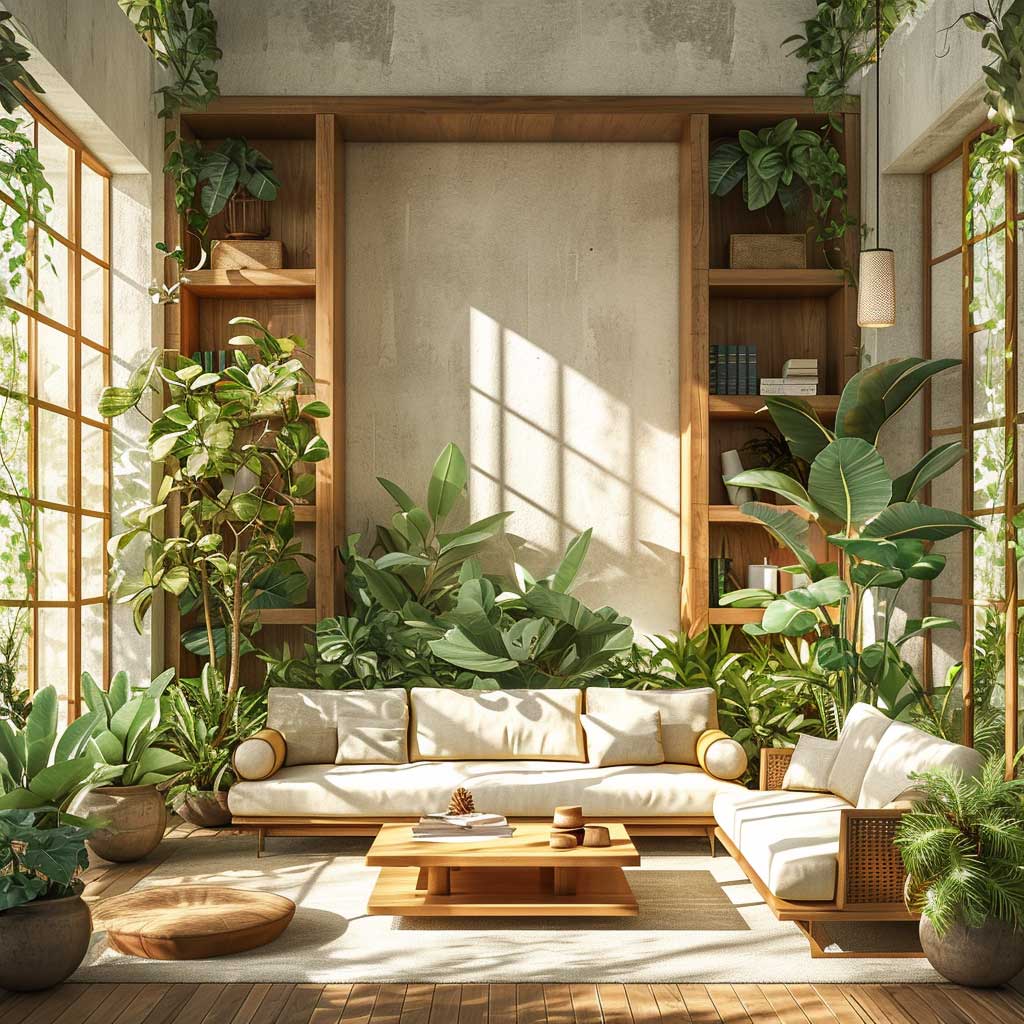
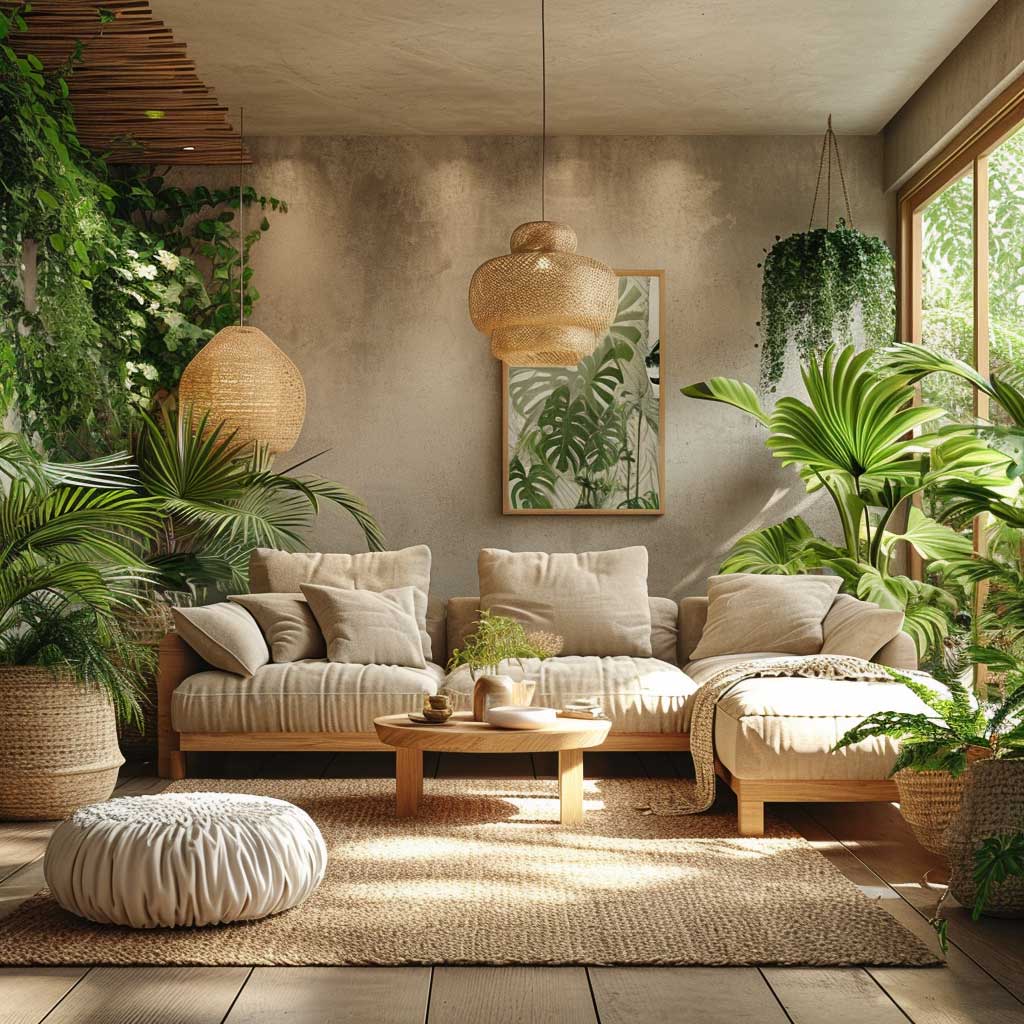

The use of natural materials extends beyond plants and light. Furniture and décor items made from wood, stone, or bamboo add texture and warmth to the room. These materials, with their inherent imperfections and unique patterns, bring a piece of the outside world into the home. The tactile experience of touching a wooden coffee table or a stone mantelpiece can be subtly grounding and comforting.
Incorporating natural elements into a living room’s color palette is another way to embrace biophilic design. Earthy tones like greens, browns, and blues can create a calming and harmonious atmosphere. These colors can be introduced through wall paint, upholstery, rugs, or decorative items. They help to create a sense of continuity with the natural world outside, making the living room a true sanctuary.
Biophilic design in living rooms also acknowledges the importance of sensory experiences. Soft, natural fabrics in cushions and throws, the sound of water from a small indoor fountain, and the inclusion of natural fragrances through flowers or essential oils can all enhance the sensory experience. These elements work together to create a living room that is not only visually appealing but also emotionally and physically nurturing.
Serenity and Greenery in Biophilic Bedroom Concepts

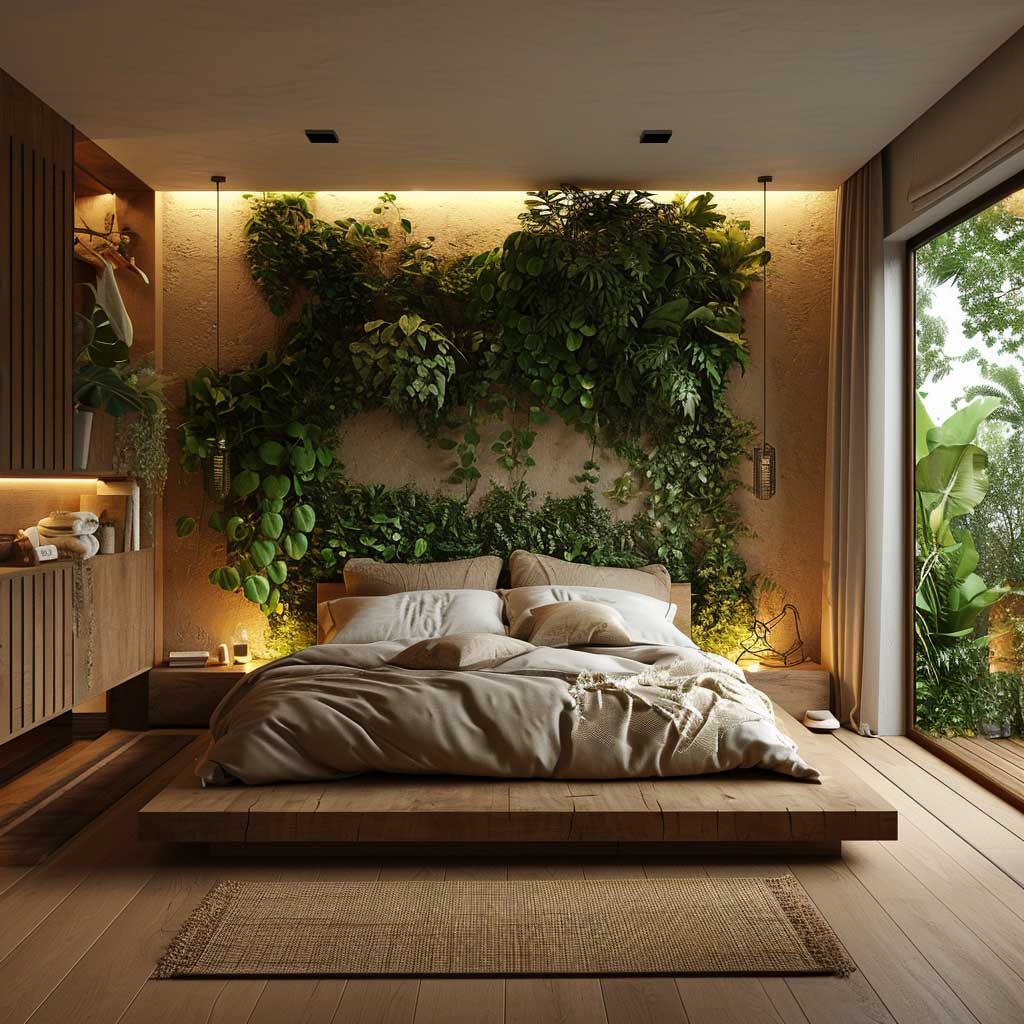
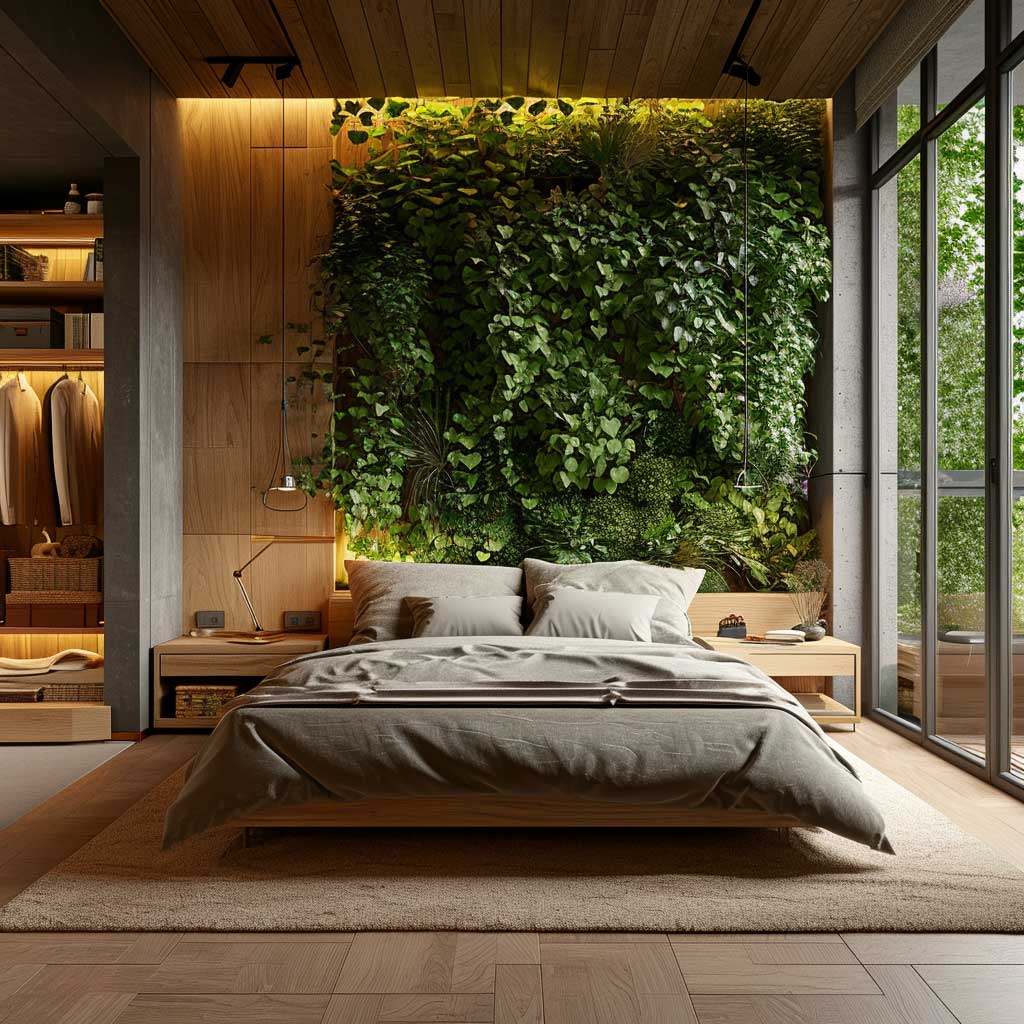
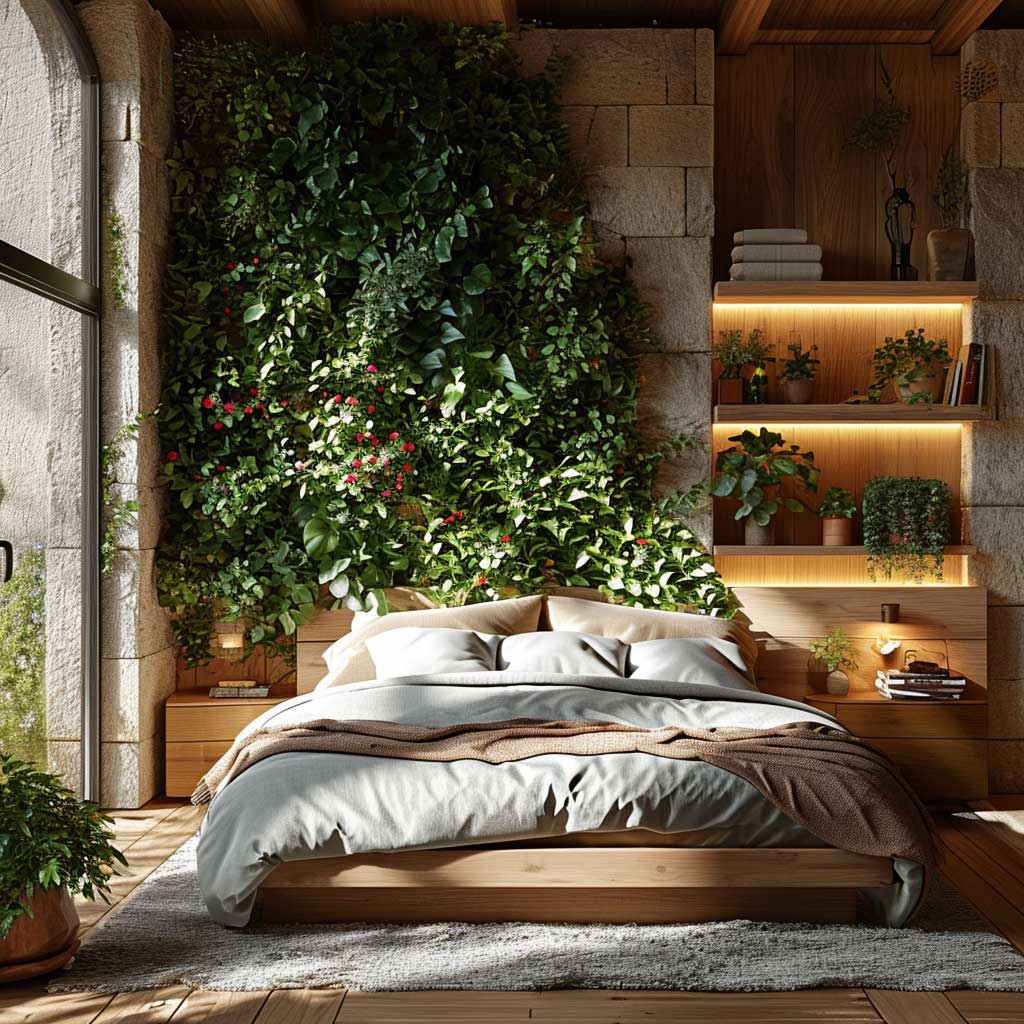
The bedroom, a personal retreat for rest and rejuvenation, becomes a haven of tranquility with the application of biophilic interior design principles. This approach, which emphasizes a connection to nature, can transform a bedroom into a space that promotes relaxation and improves overall well-being.
Central to biophilic design in bedrooms is the incorporation of greenery. A wall of lush plants, whether in the form of a living wall or carefully selected potted plants, brings life and vitality to the space. These plants do more than just beautify; they improve air quality and create a calming, restorative environment. The presence of nature in the bedroom can reduce stress and anxiety, making it easier to unwind and sleep better. The green hues of the plants are visually soothing and can help to establish a peaceful ambiance that is conducive to relaxation.
Natural materials are also integral to biophilic bedroom designs. Furniture and decor items crafted from wood, bamboo, or wicker not only add an organic aesthetic but also connect the space to the natural world. These materials bring a sense of warmth and comfort, essential in a room meant for rest. The texture of wood grain, the smoothness of stones, or the roughness of natural fibers all contribute to a multisensory experience, enhancing the room’s calming effect.
Lighting in a biophilic bedroom is crucial. Maximizing natural light during the day helps maintain a connection with the outside world and regulates circadian rhythms, which is vital for good sleep health. In the evening, the use of soft, warm lighting can mimic the setting sun, preparing the body and mind for rest. The placement of lighting fixtures, the use of dimmers, and the selection of lampshades all play a role in creating the right ambiance.
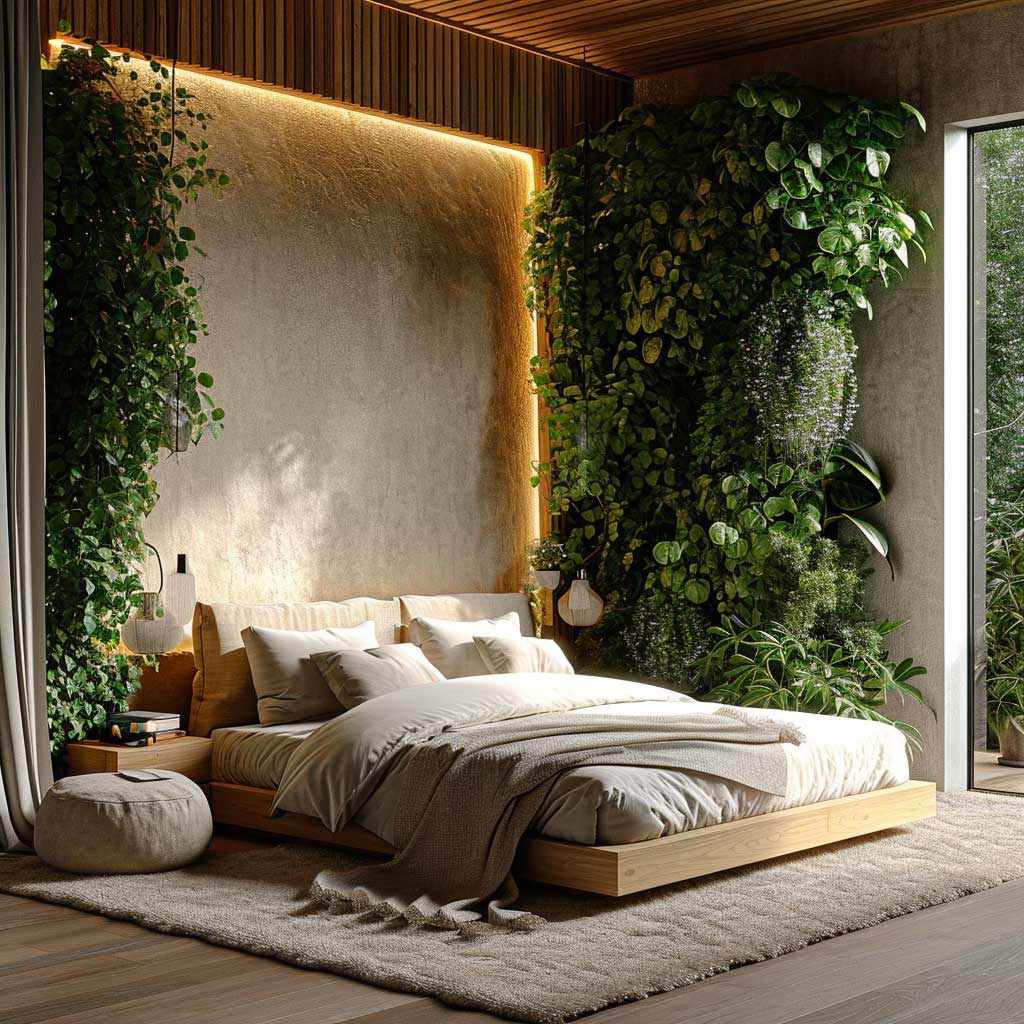
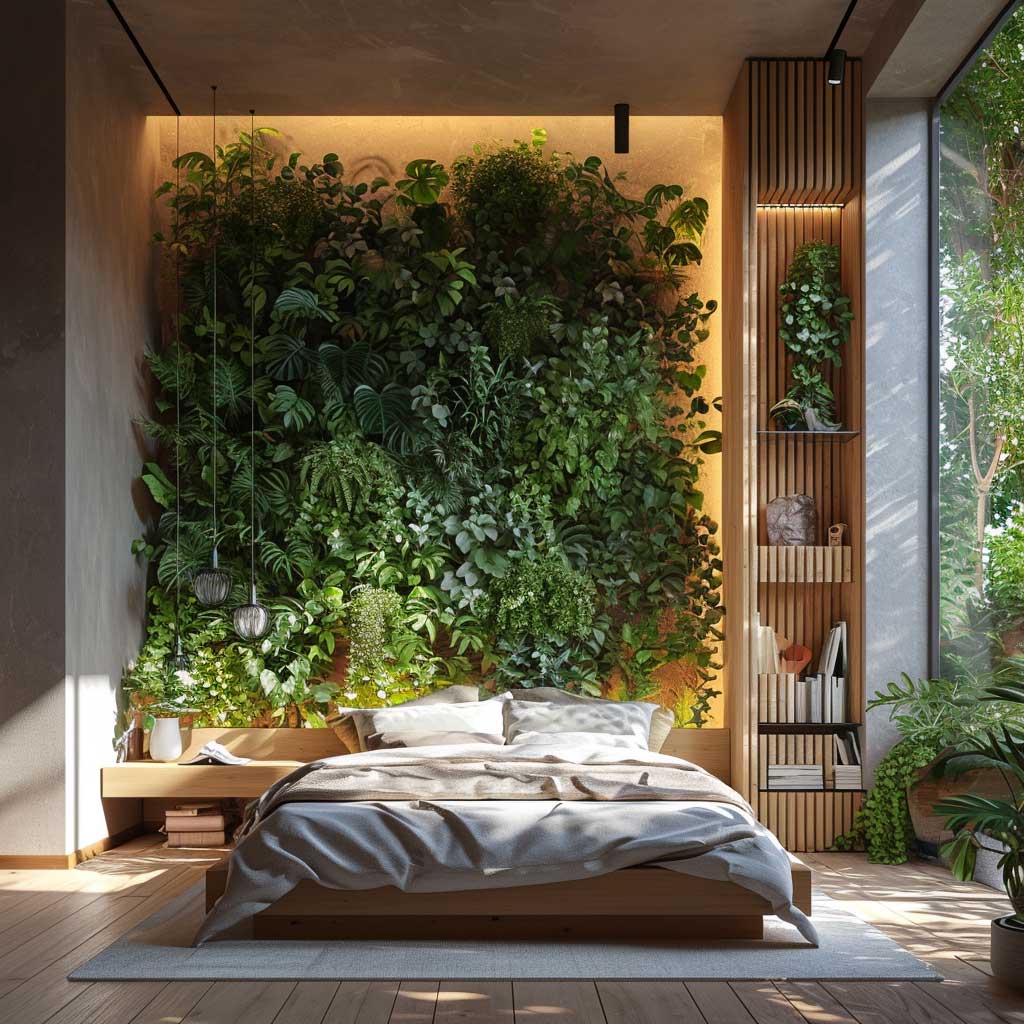
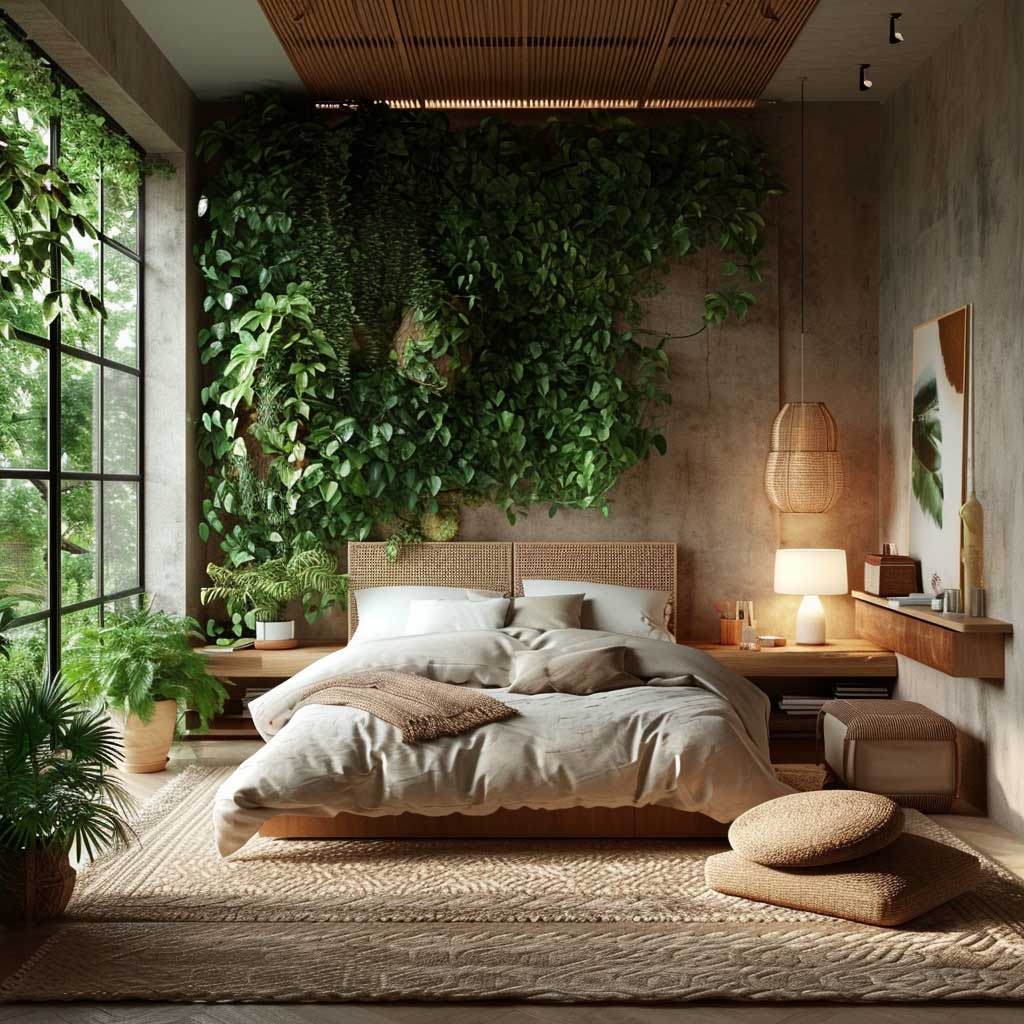
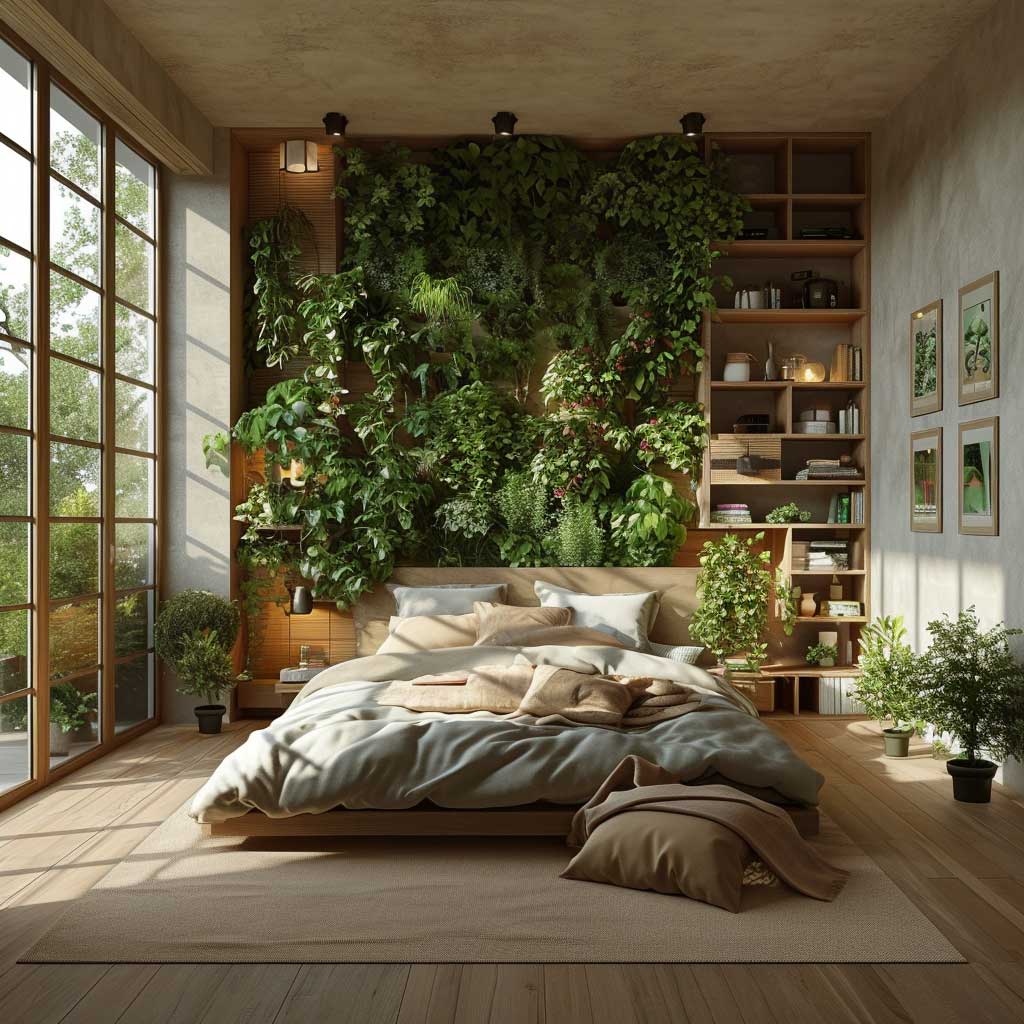
The color scheme in a biophilic bedroom often reflects the hues found in nature. Soft greens, blues, and earth tones can be incorporated through wall colors, bedding, and accessories. These colors are known for their calming properties and can help create a serene and restful environment.
Sensory elements in a biophilic bedroom, such as the sound of a small water feature, the feel of natural linen sheets, or the scent of essential oils, can further enhance the sense of tranquility. These elements engage the senses in a subtle yet powerful way, promoting relaxation and a deep sense of well-being.
In conclusion, biophilic design principles can transform a bedroom into a serene, green oasis. By bringing elements of nature indoors, these spaces become more than just areas for sleep; they evolve into sanctuaries for mental and physical well-being. The integration of plants, natural materials, and sensory experiences creates an environment that nurtures the soul, making the bedroom a true retreat in the modern home.
Revitalizing Workspaces with Biophilic Design Elements

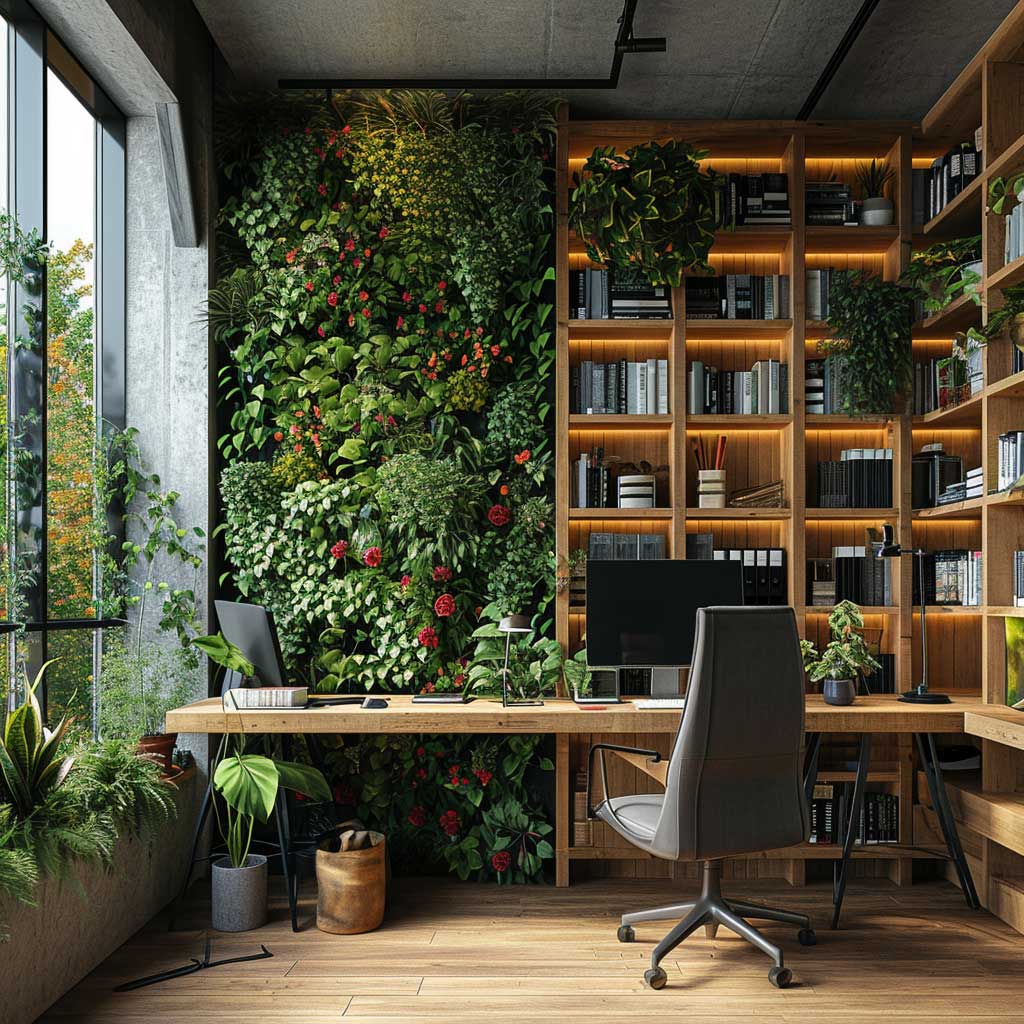
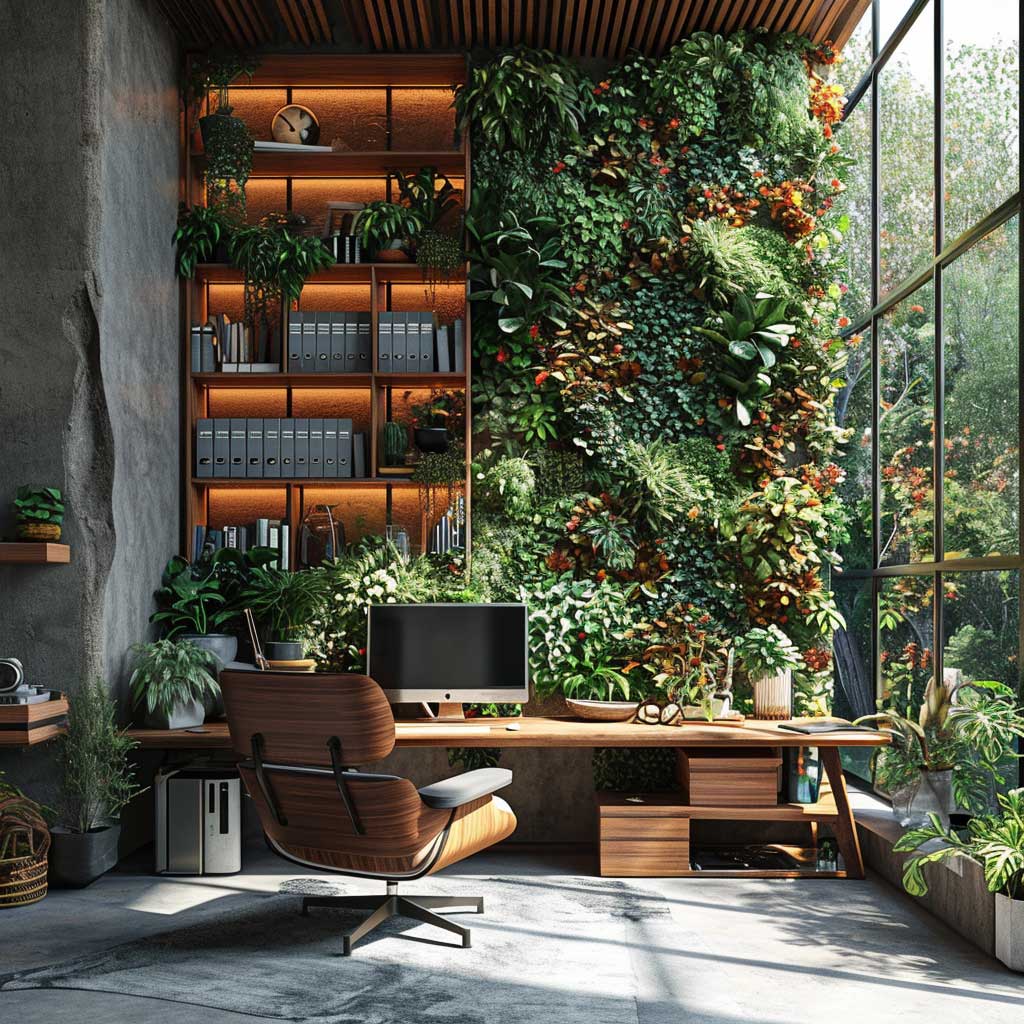
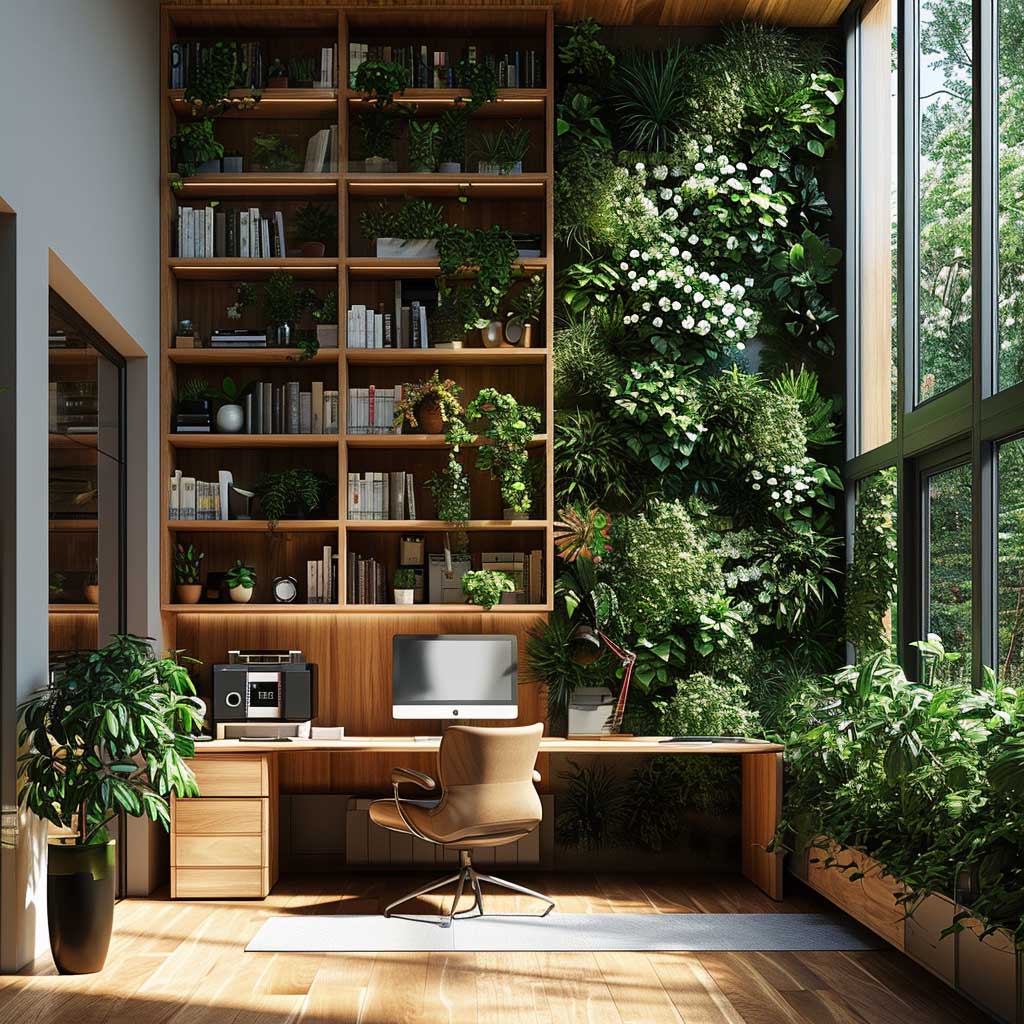
In today’s fast-paced world, the importance of a well-designed workspace is paramount, especially when it comes to home offices. Biophilic interior design, with its focus on incorporating natural elements, offers a refreshing approach to workspace design. This concept not only enhances the aesthetic appeal of a home office but also boosts productivity, creativity, and overall well-being.
A key feature of biophilic design in workspaces is the incorporation of a vertical garden or other plant elements. The presence of greenery in a home office has numerous benefits. It not only purifies the air but also reduces stress and increases focus and creativity. Plants have a calming effect, making it easier to concentrate and work efficiently. A vertical garden can also serve as a stunning visual focal point, transforming a mundane workspace into a vibrant and dynamic environment.
Natural light is another critical aspect of biophilic design in workspaces. Ample windows that allow in sunlight can significantly impact mood and energy levels. Natural light helps regulate circadian rhythms, which is essential for maintaining focus and productivity throughout the day. For spaces where natural light is limited, using light fixtures that mimic natural light can be an effective alternative.
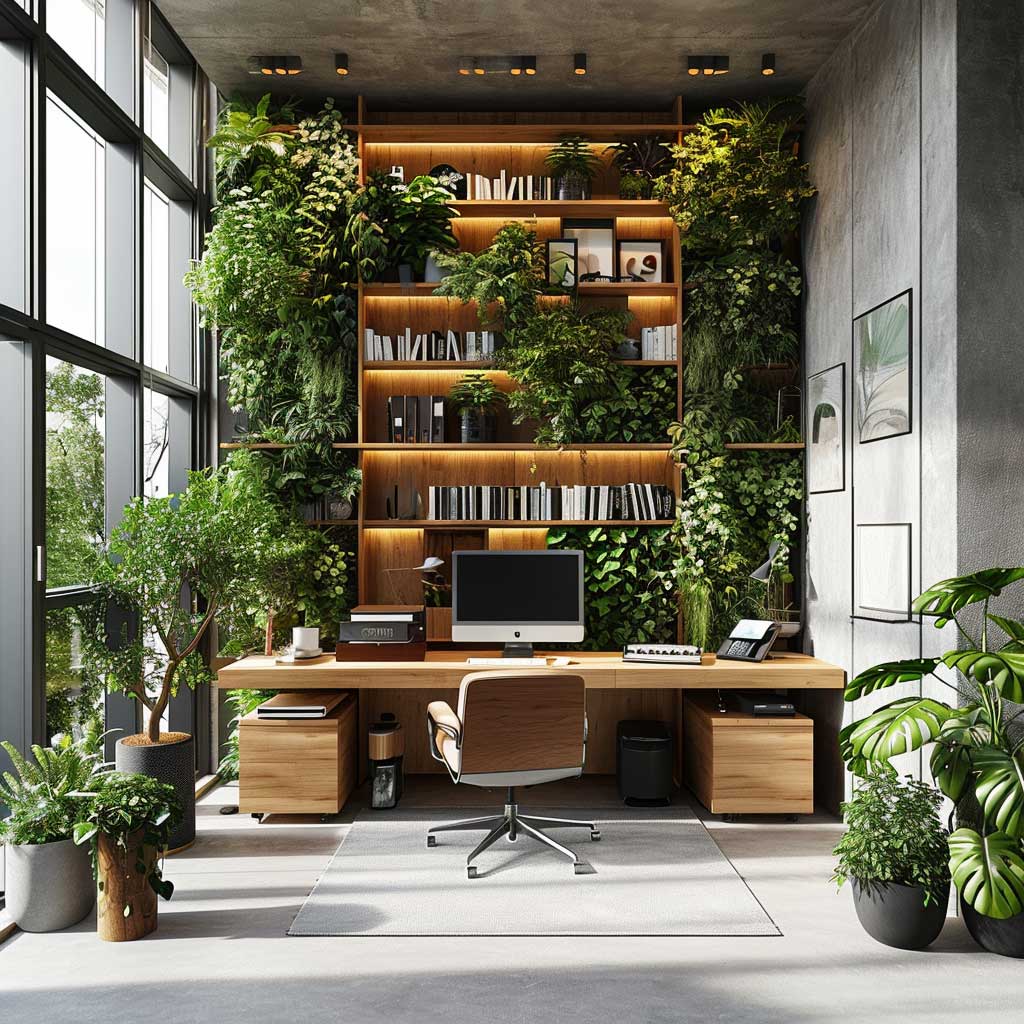



The use of natural materials and textures is also essential in biophilic office design. Wooden desks, stone accents, or bamboo accessories can add warmth and texture to the workspace. These materials not only bring an element of the outdoors inside but also create a more comfortable and inviting work environment. Ergonomic furniture made from natural materials can also contribute to physical well-being, ensuring comfort during long working hours.
Color plays a significant role in biophilic office design. Earthy tones and nature-inspired hues can create a calming and focused atmosphere. Soft greens, blues, and browns can be used in wall colors, desk accessories, or artwork to bring a sense of tranquility and focus to the workspace.
In conclusion, incorporating biophilic design elements into workspaces is more than just a design trend; it’s a way to enhance the quality of work life. By bringing elements of nature into the home office, it’s possible to create a space that not only looks good but also promotes health, well-being, and productivity. This approach to office design offers a refreshing change from the traditional workspace, making it an invigorating and nurturing place to work.
Biophilic interior design is more than a trend; it’s a meaningful shift towards creating spaces that honor our intrinsic need for a connection with nature. By incorporating elements like plants, natural materials, and light, these designs go beyond aesthetics to positively impact our mental and physical well-being. The result is not just a visually stunning space but a nurturing environment that promotes health, happiness, and a sense of peace. In today’s fast-paced world, biophilic design offers a sanctuary, a place where we can reconnect with nature and find a moment of tranquility in our everyday lives.




